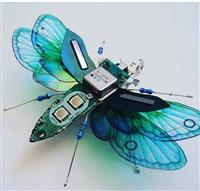
I'm currently working on a battery supply with protection/charging and I would like to test battery discharge but right now I only have LEDs as a load and current use is low so discharge is too slow.
I tried adding more LEDs but it seems like the circuit cuts off for some reason.
Is there a better way to have a manageable load that I could adjust or calculate to drain my battery at an acceptable rate?
I'm using a li-ion 18650 3300mah.
Thanks
- Comments(1)
A****min
Mar 18.2020, 14:45:43
How variable do you really need? A small selection of power resistors can make a might fine load without any support logic at all. You can also get power rated potentiometers. These are dirt simple solutions. I always like simple when it comes to loads and if you don't need variable a resistor is often the smart approach. If you imagine a resistor decade box but instead set it up with power rated switches and power rated resistors you can have adjustability in steps. Just choose a step size that makes sense.
Another approach is a DC motor. A motor can be a constant load or you can vary the current draw somewhat by loading the motor down. Don't forget the common light bulb too.
What works best for you will depend. There are likely more ways to load a circuit.
And when it comes to MCUs, the benefit of reusing a part that you have used before, that did the trick and that you know well are obvious. You don't need to read a brand new datasheet to know how to integrate it properly hardware-wise, and you don't need to install/learn new development tools, register lists and libraries, and can reuse a lot of code you already wrote.
The benefits for simpler parts are often less obvious.
Oh and interestingly, the relationship engineers have with saving time is a complex one, and largely depends on your work conditions.

